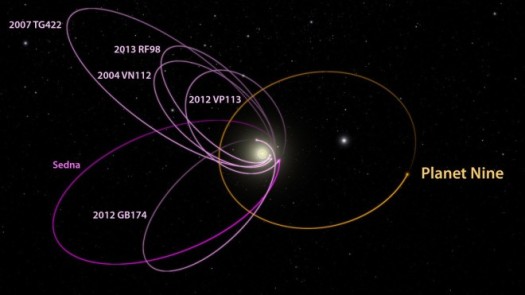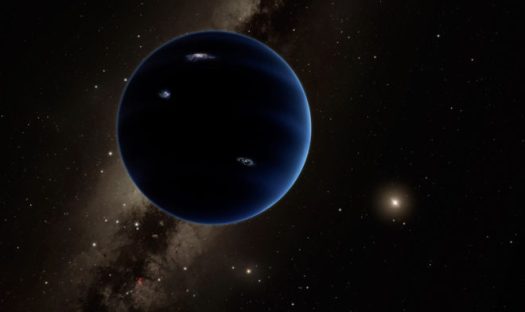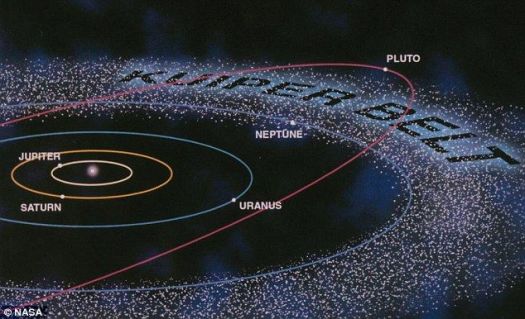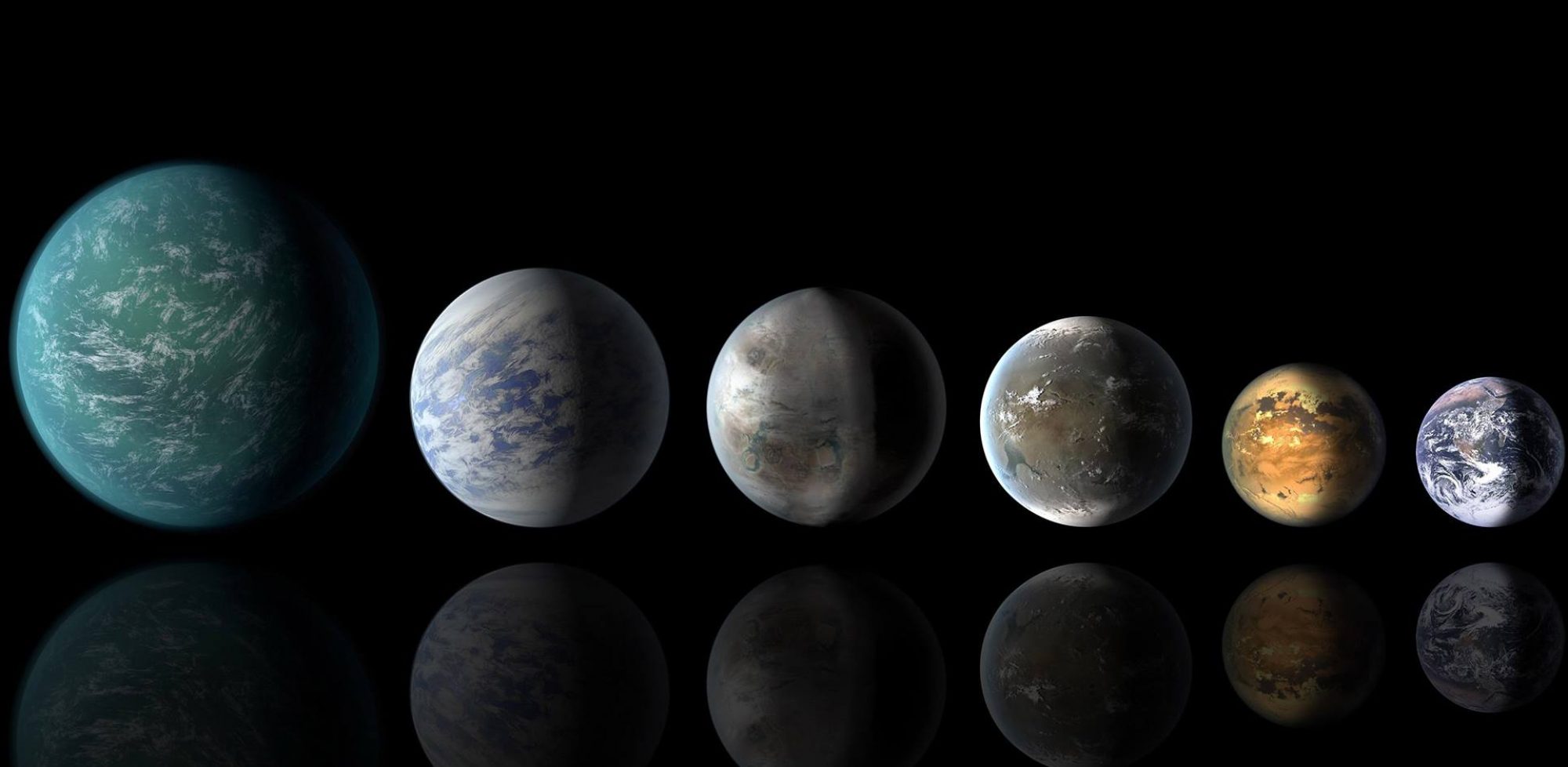
There’s been a ton of justifiable excitement these days about the possible discovery of a ninth planet in our solar system — an object ten time the mass of Earth and 200 times further from the sun. Especially in the context of the recent demotion of Pluto from a planet to a dwarf planet, the announcement of a potential replacement seems almost karmic, stage managed, in its take-and-give. This is especially so since the astronomer probably most responsible for the diminished position of Pluto is also the one who now asserts the very far away presence of a different Planet 9 — planetary astronomer Michael Brown of the California Institute of Technology.
The validity of the possible detection of a Planet 9 has set off hot debates — with NASA officials, for instance, making clear that the agency sees the “discovery” as an exciting but early step towards establishing the existence of possible new planet. We are all drawn to discovery and controversy, so the presence, or non-presence, of the planet has been the focus of attention.
But another most intriguing aspect of the finding has been largely ignored — the way that such a Planet 9 would make our solar system surprisingly more similar to the many more eccentric exoplanet solar systems now known to be out there. Our solar system would also suddenly have a range of planets sized more like the galactic norm.
What’s more, there’s reason to consider that a Planet 9 could have been spun off another solar system rather than having been ejected from the inner solar system, as proposed by Brown and colleague Konstantin Batygin.
In other words, Planet 9 may be an “exoplanet” in origin. And if not, a finding that it was ejected long ago from our inner solar system would answer some questions about why our system seems to be so different from many of the other exoplanetary systems discovered so far.

“Our Planet 9 has a very eccentric orbit like planets in many other solar systems, and it’s a size of planet not found in our solar system but is the most common in other solar systems,” said Brown. “Seems odd to say, but it would make our solar system more normal.”
More specifically, here are the reasons why:
- The most commonly sized exoplanet detected so far is larger than Earth and smaller than the next largest planet in our solar system, Neptune. Since the difference in size is substantial — Neptune’s diameter is 4 times greater than Earth’s and its mass is 17 times greater — that leaves a lot of exoplanets of a size category different from anything in our solar system. This absence has been a puzzle and would be reduced if Planet 9, some 10 times more massive than Earth, was determined to be real.
- Many, if not most, solar systems identified so far are home to planets with very eccentric orbits. In our solar system, the eight planets orbit on a generally singular plane, and most orbits are more circular than not. The proposed Planet 9 would orbit on a very different plane — thirty degrees off the rest of the solar system’s planetary plane — and it circles the Earth in a most peculiar 10,000 to 20,000-year orbit.
- Astronomers theorize that planets are ejected from their solar systems all the time, and roam through space without an orbit. But in theory, they can easily move into a solar system where a sun and other planets pull it into an orbit around them. This kind of planet capture has been successfully modeled many times, and has even once been identified.

The question of whether the object identified came from the inner solar system (as deemed likely by Brown) or from elsewhere is a complicated one with a special interest for exoplanet researchers.
As reported by Brown and Batygin, the best theory to explain the faraway presence of Planet 9 is that it was ejected long ago from the region around Jupiter to Neptune. Such solar system ejections are understood to happen all the time, and it would be a logical explanation given the relative closeness of our solar system planets. The planet could have gotten knocked off course by coming too close to Jupiter, with its strong gravitational pull.
As theorized by the two authors, the planet could have then come to an orbital rest after being slowed down by gases. But that wouldn’t occur until it was well past the solar system we know: each orbit around the sun would take an estimated 15,000 years.
But Hagai Perets, an astrophysicist formerly at the Harvard-Smithsonian Center for Astrophysics and now at the Israel Institute of Technology, says it is equally or perhaps more plausible that Planet 9 (if it exists) came from another solar system entirely. Having studied “roaming planets” kicked out of their solar systems, he says he is convinced that it could happen.
“Solar systems,” he said, “throw around their planets like we toss balls.
“We know there are planets with very wide orbits, thousands of astronomical units {the distance from the sun to Earth} from their suns. We need a mechanism to explain this phenomenon, since the planets could not be formed in that region.

“That’s where stellar clusters come in, because most stars are formed in these clusters. With so much activity going on as stars and solar systems are formed, it makes sense that there would be a great scattering of planets in their early epochs, and some of those planets would be ejected completely.
“They become free-floating, rogue planet,” he said. “We have observational evidence that they exist, as well as our theoretical models.”
Brown agrees that Planet 9 could have come from another solar system, but he believes that an ejection from our inner solar system is the most plausible explanation.

The potential discovery of a Planet 9 was made the way that Neptune was first identified — by detecting its gravitational effects on other objects. (In the case of Neptune, that meant the effects on Uranus.) This indirect process of discovery is not dissimilar from the first, and still widely used, method of finding exoplanets — by detecting through radial velocity the gravitational “wobble” that exoplanets cause in their host stars.
Brown and Batygin found evidence for the planet’s existence in the peculiar orbits of objects well beyond Neptune detailed in a previously published study by Scott Shepard of the Carnegie Institution for Science. The authors analyzed six of the objects and found that they moved in their elliptical orbits while pointing in the same direction and while tilted at similar 30 degrees angles.
“It’s almost like having six hands on a clock all moving at different rates, and when you happen to look up, they’re all in exactly the same place,” Brown said in a statement. “Basically it shouldn’t happen randomly. So we thought something else must be shaping these orbits.”
Brown has a long history of studying the vast Kuiper Belt well beyond Neptune and its untold objects large and small. It was in the course of his research of these “trans-Neptune objects” that he came to the conclusion that Pluto didn’t meet the accepted standards for what defines a planet. It was just too small and its presence has little or no effect on surrounding objects. Having reached that conclusion, he became a leader in the effort to have the planet demoted.
So having been involved in the undoing of the original Planet 9, he is now convinced there is another — very different — Planet 9. Brown specifically calls it “Planet 9” rather than the long-discussed “Planet X” because, he said, there have been so many false claims made about a possible “Planet X.”
As he explained it: “We wanted to highlight the strong science behind the finding.”
Now that stronger evidence for the distant world has been discovered, Brown thinks that within five years the planet can be directly imaged by astronomers — or perhaps will be discounted as unable to be confirmed.
Ironically, the naming of a “Planet 9” has already hit some headwinds — well before its existence is confirmed or rejected. As with the change of the name of Pluto from a “planet” to a “dwarf planet,” there is interesting science behind the objections.
Alan Stern, principal investigator for the New Horizons mission to Pluto, has dismissed the name “Planet 9” due to his firm belief that there are many objects orbiting out beyond Pluto that are potentially planet size.
“I think the number of planets in our own solar system is going to explode, and that this is going to be one of the important lessons of 21st century astronomy. I think people will get over worrying about their names pretty quickly.”

Stern pointed to research suggesting the early presence in our solar system of large planets that were later ejected to places unknown. Some of those planets likely stuck around in far-off orbits like the proposed Planet X (or Planet 9.)
If this turns out to be the case, Stern said, their existence would confirm his (and others’) long-held belief “that the majority of the planets in our solar system orbit far beyond the classical ones we grew up with.”
In addition to being compelling science, such detections would also support the view that the primary difference between planets in our solar system and exoplanets beyond is simply where they orbit. Consequently, just as the study of our solar system informs the exploration and characterizing of exoplanets and their systems, so too does the science of exoplanets help better understand our solar system.
Together, they also tell us that our understanding of the vast menagerie of planets out there remains quite limited, with far less known than unknown.

Hi,
I’m wondering if it might be possible to search data from the voyger spacecraft to see if there might be evidence of planet 9. Just thinking out loud…
LikeLike